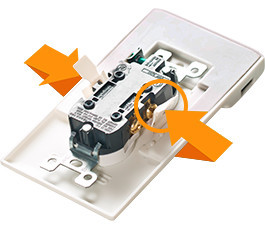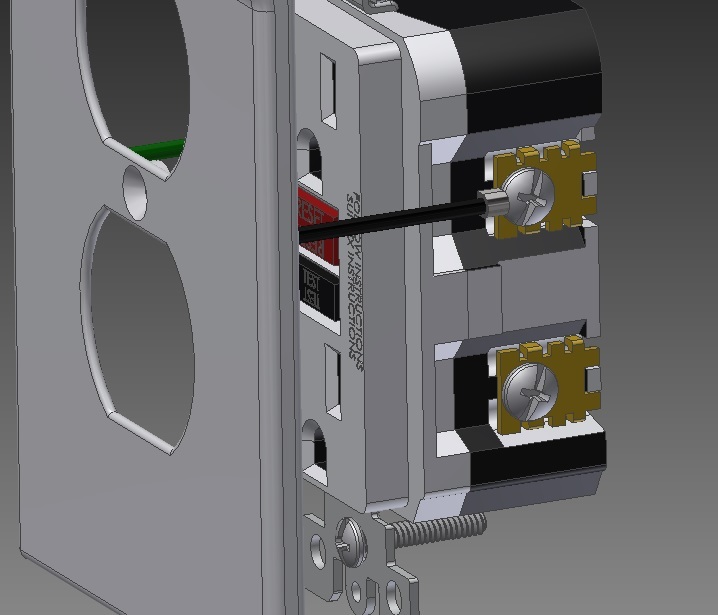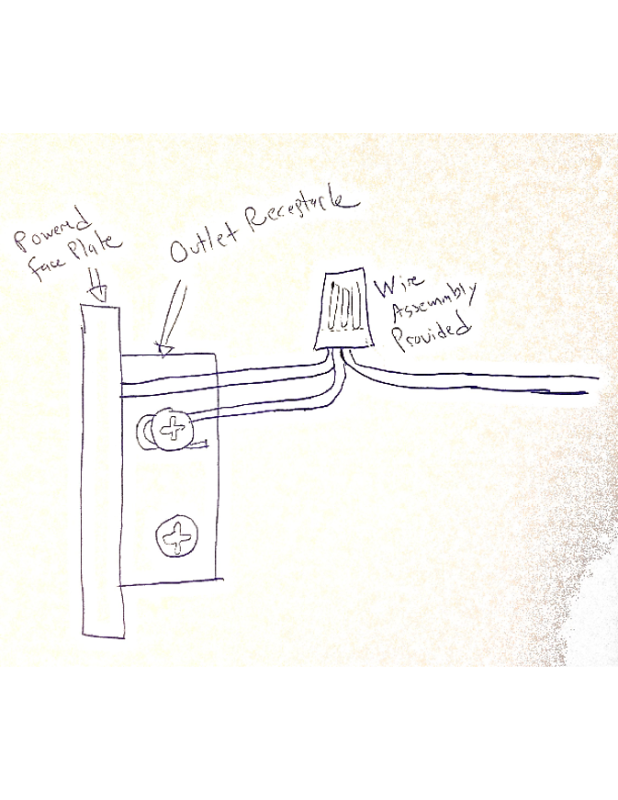metalman8357
Materials
- Oct 5, 2012
- 155
Hello All,
I am working on a product that will be an actively powered face plate for a wall outlet receptacle. Basically the socket will provide power for my faceplate and I need to tap into the power of the outlet. There is a company that makes an active face plate (
 ) and they use a patented clip out of the back of the faceplate to make contact with the terminal screws on the outlet to provide power. I would love to use this mechanism to power my face plate but unfortunately the mechanism is patented!
) and they use a patented clip out of the back of the faceplate to make contact with the terminal screws on the outlet to provide power. I would love to use this mechanism to power my face plate but unfortunately the mechanism is patented!
The simplest method would be to just use two wires out of the back of the face plate and have an open ring terminal on the end of the wires that could be used to slip under the existing screw terminal that holds the mains power lines (
 ). Unfortunately I've been told that this configuration would violate the electrical code which prohibits two wires being used on the same screw terminal?
). Unfortunately I've been told that this configuration would violate the electrical code which prohibits two wires being used on the same screw terminal?
I am not well versed on the code but basically I need a way to attach my Hot and Neutral wires from my actively powered faceplate into the existing wall socket without infringing on the patent as discussed previously. Is there a simple solution I'm just not seeing?
Any input would be helpful!
I am working on a product that will be an actively powered face plate for a wall outlet receptacle. Basically the socket will provide power for my faceplate and I need to tap into the power of the outlet. There is a company that makes an active face plate (

The simplest method would be to just use two wires out of the back of the face plate and have an open ring terminal on the end of the wires that could be used to slip under the existing screw terminal that holds the mains power lines (

I am not well versed on the code but basically I need a way to attach my Hot and Neutral wires from my actively powered faceplate into the existing wall socket without infringing on the patent as discussed previously. Is there a simple solution I'm just not seeing?
Any input would be helpful!

